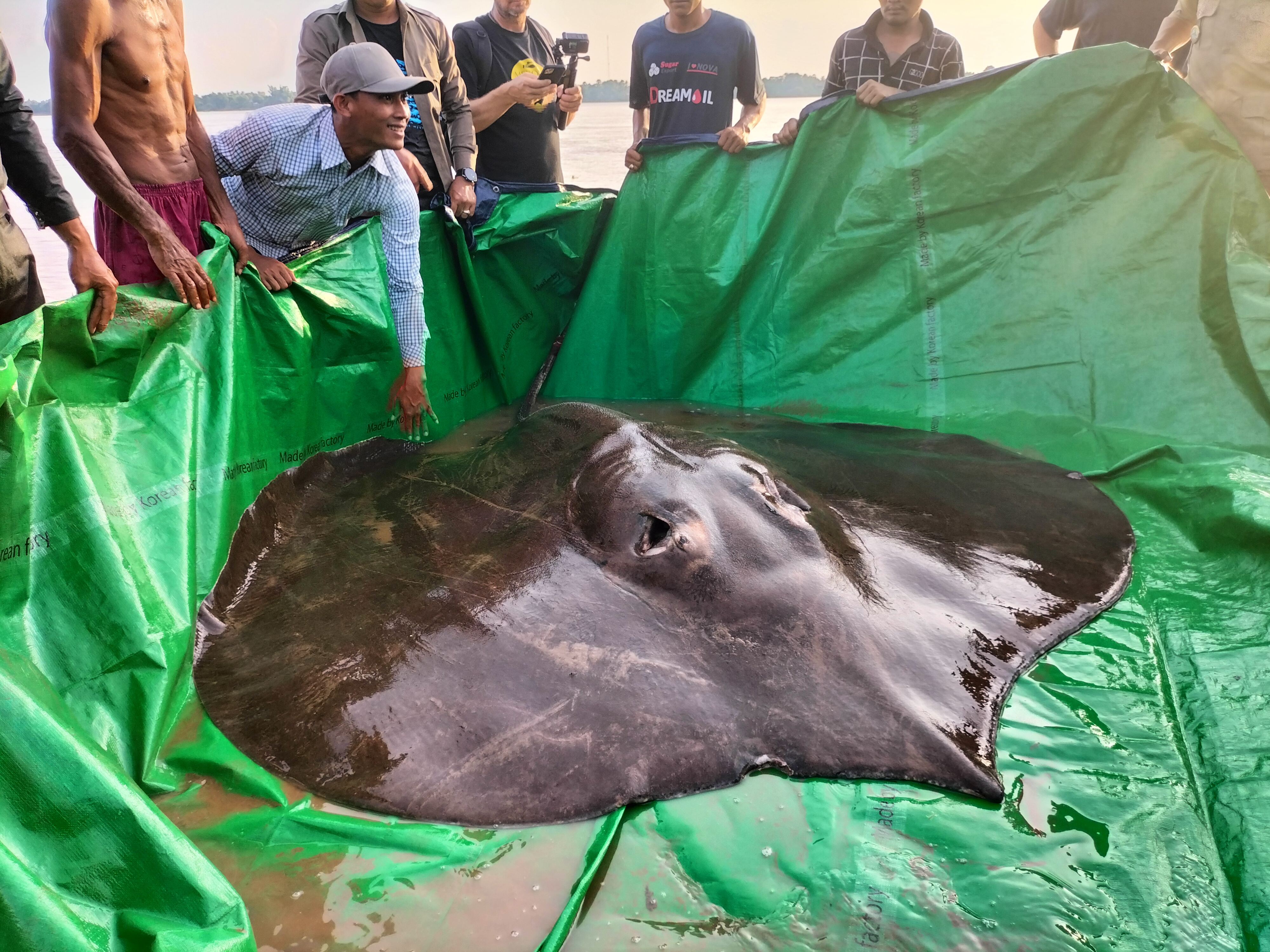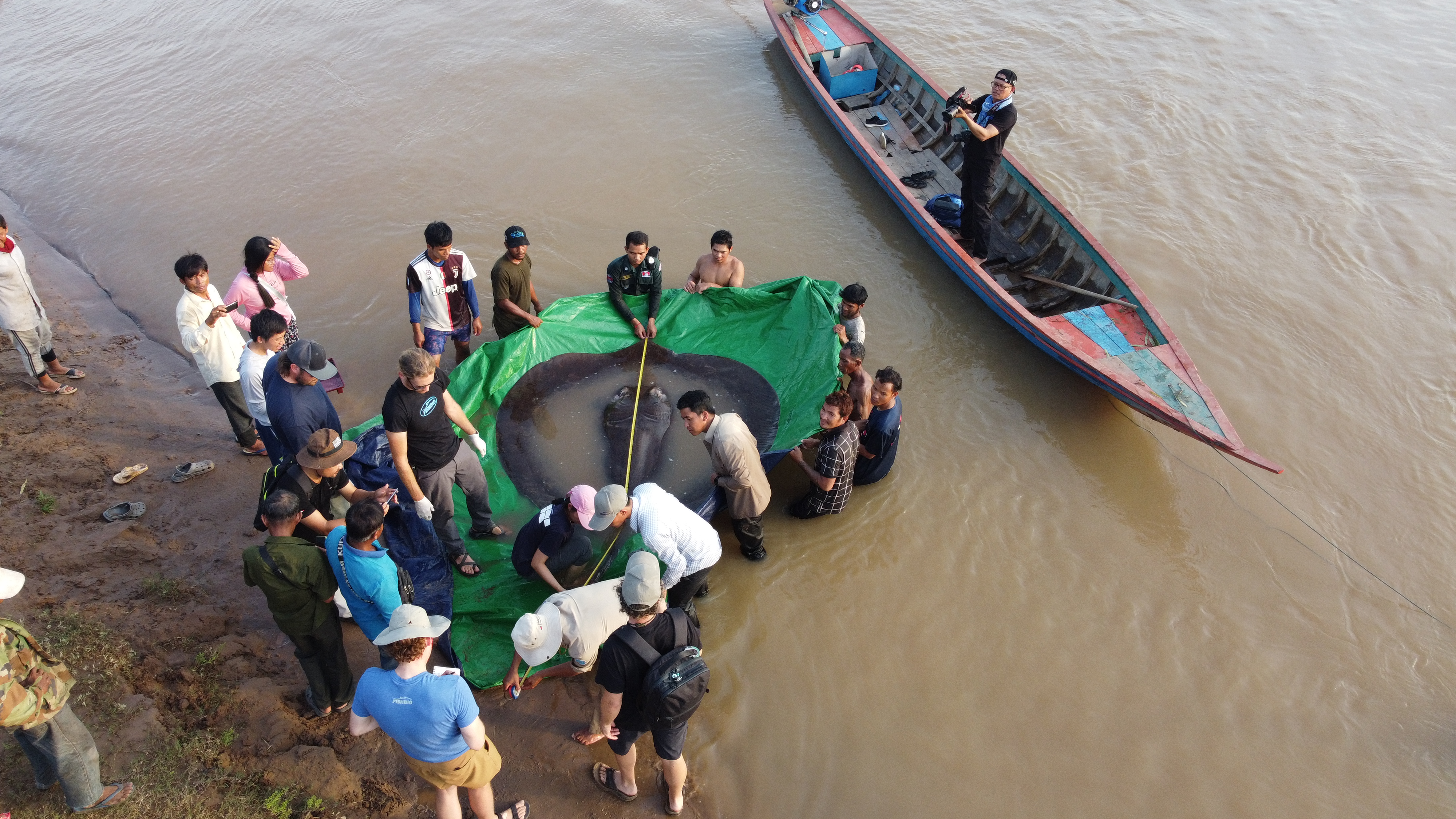Biggest freshwater fish ever caught is a stingray that weighs nearly as much as a polar bear
It looks like a really, really big pancake.

A fisherman in Cambodia snagged the rights to a true fish tale last week, landing what turned out to be the largest freshwater fish ever caught.
The giant freshwater stingray (Urogymnus polylepis) is more than 13 feet (4 meters) long and weighed in at a whopping 661 pounds (299.8 kilograms). Despite its massive bulk, little is known about this species of stingray's habits and behavior in the wild. Scientists tagged and released the record-breaker in order to learn more about its migration patterns and preferred habitats.
The flapjack-shaped find has now secured the status of the giant freshwater stingray as the largest known fish in the world, nudging out the Mekong giant catfish (Pangasianodon gigas), the largest of which was a 646-pound (293 kg) specimen caught in Thailand in 2005.

The giant freshwater stingray also hails from the Mekong River. It was caught on June 13 by a fisher named Moul Thun in the Stung Treng province in northeastern Cambodia, according to NBC. The next morning, Thun called in researchers from the conservation organization Wonders of Mekong, which has been working to record and protect giant stingrays in the waterway. The Mekong is the only place in the world where these giant fish are found, Zeb Hogan, director of the Wonders of the Mekong project and a research associate professor at the University of Nevada in Reno, told NBC.
"It’s a particularly healthy stretch of the river with a lot of deep pools — pools up to 90 meters [295 feet] deep," said Hogan, a fish biologist who hosts National Geographic’s "Monster Fish" television series. "We started focusing on this area as a stretch of river that’s particularly important for biodiversity and fisheries, and as a last refuge for these big species."
This is the third giant stingray catch-and-release of the last two months, according to NBC. All three stingrays, including a 397-pounder (180 kg) caught in May, were female, raising the possibility that this stretch of river might be a nursery where stingrays go to lay eggs and raise young.
Wonders of Mekong pays fishers market price for their released catches. The researchers also tagged this stingray with an acoustic transmitter that will help the scientists keep tabs on the monster fish for a full year. Hydroelectric development projects may be in store for locations along the Mekong, Hogan told NBC, and learning about the fish's migratory needs is important to ensure that any future projects don't threaten the stingrays. To that end, the researchers plan to tag and release several hundred large Mekong River fish.
Sign up for the Live Science daily newsletter now
Get the world’s most fascinating discoveries delivered straight to your inbox.
"This is going to allow us that first, kind of empirical data to gain that information about those individual migratory patterns of fish," Hogan said in a video released by Wonders of Mekong. "So, to gain that information about individuals, that's going to be really critical to promote the conservation of the species."
Originally published on Live Science

Stephanie Pappas is a contributing writer for Live Science, covering topics ranging from geoscience to archaeology to the human brain and behavior. She was previously a senior writer for Live Science but is now a freelancer based in Denver, Colorado, and regularly contributes to Scientific American and The Monitor, the monthly magazine of the American Psychological Association. Stephanie received a bachelor's degree in psychology from the University of South Carolina and a graduate certificate in science communication from the University of California, Santa Cruz.










